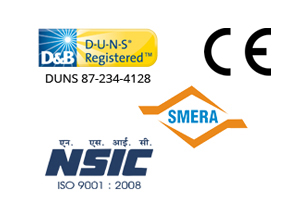In the field of healthcare, maintaining high standards of hygiene and preventing the spread of infections are paramount. To achieve this, hospitals and medical facilities rely on various sterilization methods. One such method that has gained prominence is the use of fully automatic Ethylene Oxide (ETO) sterilizers. These advanced sterilization machines play a crucial role in elevating healthcare standards by ensuring the efficient and effective elimination of harmful microorganisms.
Advanced Monitoring System in Fully Automatic ETO Sterilizers
Fully automatic ETO sterilizers come equipped with a built-in temperature and pressure monitoring system. This feature helps to ensure the cycle has been completed correctly and is safe to be opened. The sensors and actuators in the machine are also designed with redundancies, which means a single hardware or software failure won’t interfere with the sterilization process.
The sensors are able to monitor the actual ETO absorption profile throughout the sterilization cycle. They do this by measuring IR wavelengths that are absorbed by the ethylene oxide (ETO) molecule and comparing them to IR wavelengths not absorbed by ETO. This allows the sensor to accurately read in-chamber levels at a second-by-second basis, according to the manufacturer. The sensors are also unaffected by saturated RH levels and resulting condensation on the sensor viewing lens, which provides readings more accurate than traditional methods.
Unlike the traditional systems, which require scale weight or pressure displacement to measure air flow, the new sensor technology can monitor sterilization cycles with unprecedented accuracy and reliability. The ability to do this is a key for maintaining safety and consistency in healthcare.
The EPA has been engaging in outreach to facility operators who use ETO to discuss the potential benefits of control techniques that could reduce ETO emissions. The agency is considering several different options, including rule revisions or more immediate emission reduction steps. In addition, the agency has held a number of teleconferences and meetings with ETO trade associations, device manufacturers, and others to gather information about commercial sterilization facilities, processes, and emissions (including measurement and monitoring).
The ethylene oxide sterilization process is safe and highly effective when properly implemented. Fully automatic ETO sterilizers monitor every step of the cycle, ensuring that process is performed correctly and that the products are sterile. This eliminates human error and increases safety standards while reducing the risk of contamination.

Advancements in Ethylene Oxide (ETO) Sterilization
Ethylene oxide (ETO) sterilization is an effective alternative to heat- and moisture-sensitive sterilization methods. It can effectively sterilize a broad range of medical, laboratory, pharmaceutical, and food items, as well as plastics, metals, and many other materials. Its low-temperature sterilization process is also non-corrosive to metals, polymers, and rubber materials, allowing it to be used with more sensitive equipment.
While it is a safe and effective method for sterilization, ethylene oxide poses some potential risks to healthcare workers, including inhalation. Its odor less and tasteless vapor can accumulate in the air to high concentrations over prolonged periods of time, potentially causing irritation and irritability to the respiratory tract, eyes, nose, throat, and lungs. It can also cause dermatitis and other skin reactions, and it can have toxic effects on the gastrointestinal system.
Hospital Sterilizers fully automated ETO Sterilizer is designed to meet stringent safety standards in the handling and use of ethylene oxide. It has a positive pressure mechanical door locking system that prevents users from opening the chamber until atmospheric pressure is achieved inside the chamber. Its humidification is automatically controlled by wet and dry humidity transducers to ensure consistent moisture within the chamber. This feature helps to achieve the optimum conditions for sterilization and ensures that the load is in a ready-to-use condition.
Safety and Efficiency in Ethylene Oxide (ETO) Sterilization Processes
Ethylene oxide sterilization (ETO) is a very toxic gas that can be harmful to humans and must be handled carefully. As a result of its hazardous properties, ETO must be stored in a sealed container at room temperature and must never be exposed to water vapor or oxygen. In addition, a special ventilation system must be installed to capture and vent ETO vapors. Additionally, aeration of the load is required to remove any remaining gas and allow the absorbed gases to evaporate. This is done by circulating HEPA filtered air over the load for 48 hours.
This is a costly process that requires additional staff and equipment to monitor and maintain. Additionally, the use of aeration increases the cycle time and limits the amount of items that can be sterilized at one time. In a survey, half of respondents using single chamber ETO units reported not having the necessary ventilation or aeration system in place and only 23% had exposure monitoring for their employees.
In order to minimize worker exposure, the aeration and sterilization processes should be performed in a separate room. Additionally, aeration should occur in a closed chamber with only the entrance open to allow for loading and unloading of the equipment. In addition, the exhaust system should be able to route the captured ETO gas to a water scrubber for treatment.
Fully automatic ETO Sterilizers create a favourable environment by regulating timings, temperature, relative humidity and pressure of the sterilizing mixture. This helps to eliminate errors & ensures that sterilization cycle is complete. It also reduces operational costs by eliminating human errors and reducing cycle times thereby improving the quality of end products.





